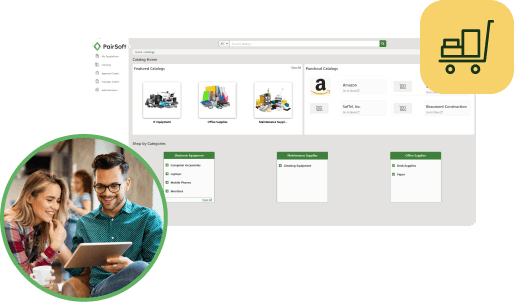According to
Symantec CloudSOC, the average company in the U.S. uses 928 cloud-based apps. While you are considering that statistic, the same source reports that the average CIO erroneously believes that the number of apps in use across the enterprise is only 30 to 40. Why are these numbers significant? Because it is a perfect illustration of how the technology industry is at once solution diverse yet interconnected and complementary. The CIO data also reminds us of how difficult it is to get an accurate handle on the big picture – especially when it comes to procurement technology.
Going vertical
A recent PairSoft article titled 7 Spend Management Lessons We’re Learning During The Pandemic reports that of the 928 apps in use, more than 100 are SaaS solutions. Many of these programs are for procurement and finance.
The article then goes on to state that APIs are the key to effectively integrating the vast number of programs into a cohesive and manageable collective. When you consider that the vertical SaaS market has tripled in the previous decade – including solutions for procurement, expense, and travel management, the words cohesive and collective take on even greater importance.
Agility in the labyrinth
From going mobile to increasing responsibility for cybersecurity – 56% of all breaches originate with a third-party partner such as a supplier, navigating the labyrinth of “opportunity” to drive procurement practice agility effectively and securely can be daunting. This last point is especially true when assessing a provider who has multiple verticals and a diverse partner base.
For example, and as suggested by the previous reference to the PairSoft article, “business agility can encompass many things (or apps).” These many things can include “automating approvals workflows, empowering work-from-home staff, and providing vendor self-service portals.”
However, when selecting a vendor with multiple verticals, you must differentiate between a jack-of-all-trade provider and one whose “offering expansion” is based on organic experience and expertise. With the former, you will often find an unevenly knitted technology mosaic of unrelated apps resulting from a merger with or acquisition of a competitor. What this means is that the integration is usually choppy with the prized functionality of the original solution lost within a new and improved “assimilated” end-to-end platform.
Conversely, with an internal organic expansion of their solution, the “organic provider” has almost always followed a customer versus general market-driven impetus. In other words, recognizing the new requirements of existing clients, the provider uses a building block approach to broaden their offering to meet said demands. Of course, beyond satisfying the ongoing needs of current clients, the new solutions naturally expand their market reach, opening the door to new opportunities and relationships thereby continuing the cycle of purposeful development.
People, process, and technology
There is also one other significant benefit of the organic versus mosaic model: the organic model is “based” on a people, process, technology approach.
More than a ubiquitous catchphrase, the providers that follow the organic growth path start the process of solution development and integration through an existing relationship. They understand the people with whom they are working and in anticipation of their requirements, collaboratively work with them to understand the process to develop the eventual technology that will achieve the intended outcome. Under such a development model, the provider’s expanded development work begins after the successful implementation of the initial solution.
Technology for people not people for technology
There is one more key differentiator between an organic versus mosaic solution provider. The organic provider sees itself as a technology company offering procurement solutions versus being a procurement company offering technology solutions.
The above statement is not a matter of semantics as it speaks directly to the problem-solving approach taken by one party versus the other.
If a provider leads with a mosaic solution, there is a greater inclination towards making the customer fit the app. This tendency might explain why an October 2019 Global CPO Survey from Deloitte reports that the vast majority of CPOs are not satisfied with their current digital transformation strategy.
In a future article, we will delve deeper into the differences between an organic and mosaic solution provider.







